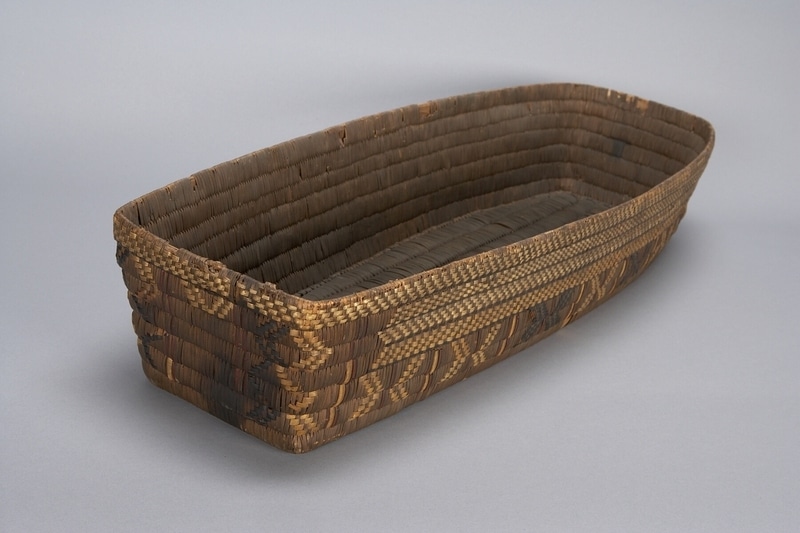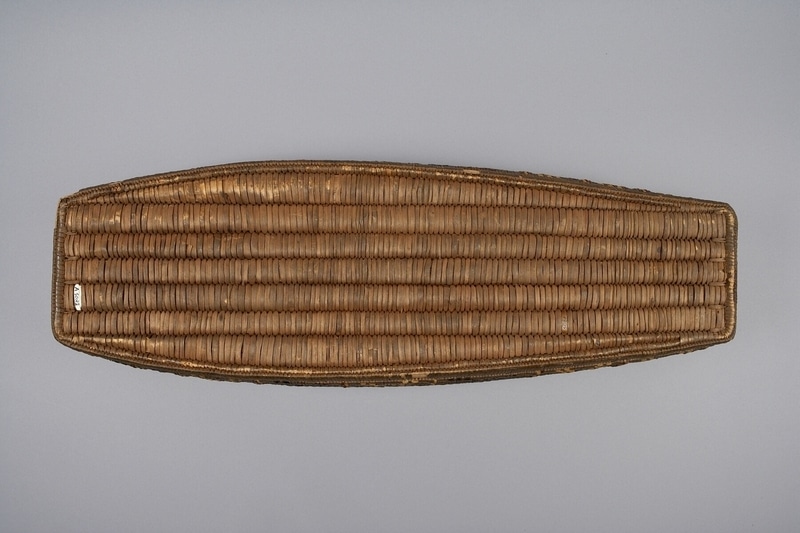Baby Carrier Item Number: A5082 from the MOA: University of British Columbia



Description
Tan, black, and red basketry cradle of interlocking coiled work (bifurcated stitches). Parallel slat base construction with single cross-stitch support and no extra rim. Decorated with beading and imbrication (partial). Top slat has four beaded rows (2:1), staggered, in cat-tail grass. Body has three similar rows at the head with a "butterfly pattern". Vertical zig-zag pattern over the rest of the basket.
History Of Use
Basketry cradles are thought to be of relatively recent origin by some basketry experts, such as Andrea Laforet of the Canadian Museum of Civilization. They may first have appeared in the late 1800s or early 1900s. In the early to mid 20th Century basket makers began expanding their reportoire of shapes and styles for collectors, and many new forms were seen including tea cups, tables, suitcases, and hand bags to name a few.
Iconographic Meaning
According to Farrand (P. 304) the zig-zag pattern may be interpreted as "The Track of the Snake".
Cultural Context
basketry; children
Item History
- Made in British Columbia, Canada before 1911
- Collected in Fraser River, British Columbia, Canada between 1885 and 1911
- Owned by Anna J. Beecher
- Owned by Frederick L. Beecher before 1952
- Received from Frederick L. Beecher (Donor) during 1952
What
- Name
- Baby Carrier
- Identification Number
- A5082
- Type of Item
- carrier
- Material
- dye, cherry bark, cat-tail grass ? and cedar root
- Manufacturing Technique
- coiled and imbricated
- Overall
- height 15.2 cm, width 27.3 cm, depth 81.3 cm
Who
- Culture
- Coast Salish: Sto:lo
- Previous Owner
- Anna J. Beecher and Frederick L. Beecher
- Received from
- Frederick L. Beecher (Donor)
Where
- Holding Institution
- MOA: University of British Columbia
- Made in
- British Columbia, Canada
- Collected in
- Fraser River, British Columbia, Canada
When
- Creation Date
- before 1911
- Collection Date
- between 1885 and 1911
- Ownership Date
- before 1952
- Acquisition Date
- during 1952
Other
- Item Classes
- basketry
- Condition
- good
- Accession Number
- 2004/0042